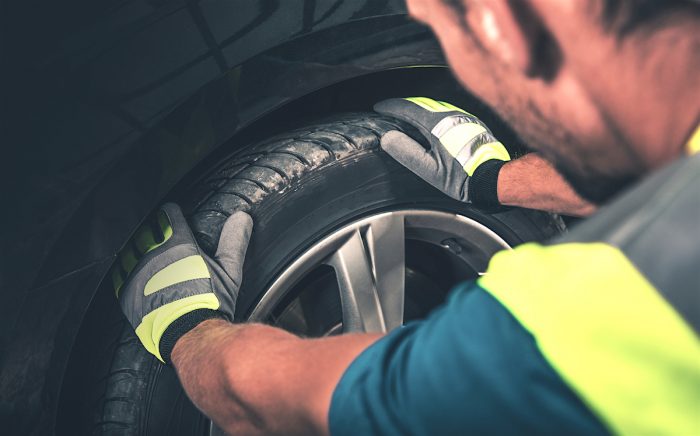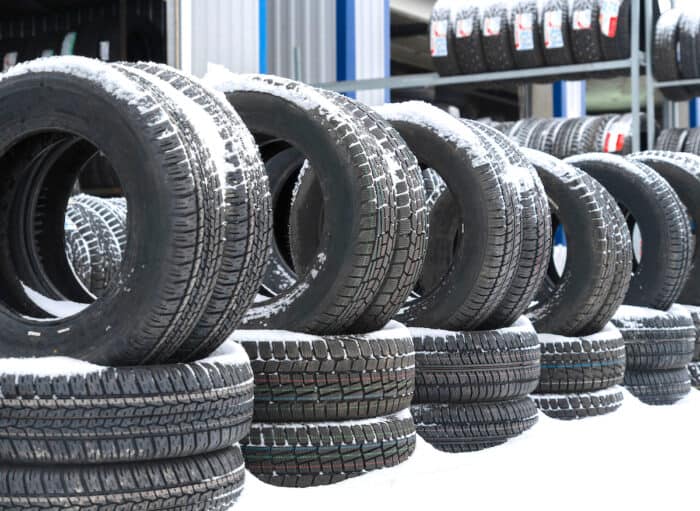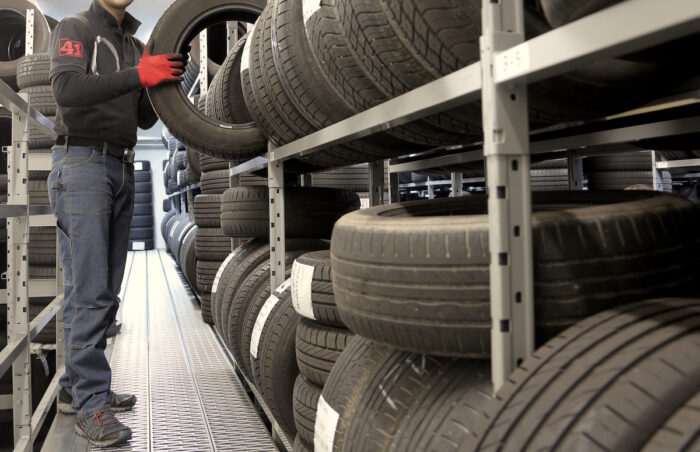The calendar has flipped over to winter, and it is time to put winter tires on our vehicles. Although winter tires are mandatory only in some regions, we highly recommend switching to winter tires to stay safe on the road instead of all-season tires during the cold season. Here are some simple ways to keep those snow-rated tires on the wintery roads a little longer.
1. Regular winter tire checkups

Like other vehicle mechanicals, your winter tires require regular checkups. As the temperature drops, tire pressure will likely drop, as well. Before any journey, always ensure that all the tires are properly inflated.
Underinflated tires decrease the fuel economy and cause the tires to wear quickly, thus affecting the car’s handling. Since we buy winter tires for improved handling on snow and ice, we kill the purpose of these tires altogether by not keeping a check on the pressure. Inspect the tire’s side or the car’s owner’s manual to find out how much air to fill the tires.
2. Make sure to change ALL winter tires

Surprisingly, some drivers believe that they should change only two tires of their front-wheel-drive vehicle. It is so untrue and can be dangerous. So, what happens when you have two winter tires and two all-season ones?
Well, both sets of tires will handle the road differently, posing a threat to your safety. The tires with less grip will surely slip, making handling difficult. Buying four winter tires will cost you more upfront, but they are in your best interest. Besides, there are some great, affordable winter tire options, including these five value-priced options.
3. Store your winter tires the right way

When putting the winter rubber away for the season, keep these storage tips in mind:
- Store in dark, dry place (away from sunlight)
- Keep them away from heaters and air ducts
- Avoid places containing grease and/or oil
- Ideally, prop them up away from possible water pooling
- Wrap them up if possible
When the snow starts to melt on the road, and it’s time to take your car out of winter storage, it is time to switch the winter tires with all-season or summer tires. Of course, you need the winters to tackle the cold, wet, slushy, icy and snowy conditions next season. For the tires to stay good, you need to store them properly. And, of course, try to avoid running on winter tires in the summer months!
Ensure that you store them in a clean, dark and dry place, away from the direct sunlight. Moreover, you should keep them from any warm areas, so avoid storing them near heaters and air ducts.
Another tip for storing winters and preventing them from breaking down is to keep them away from places containing grease, oil or, any other substance. Traditionally, you should keep the winters in a garage, but you can keep them outside if you don’t have one.
However, ensure to place them on a raised stand so they don’t sit on pools of water. Try to wrap them in waterproof covers before storing them to ensure they stay fresh for the next season.
4. Winter tire replacement, when necessary

While you take all precautions to store your winter tires, they will eventually break down. In fact, they need replacement much sooner than all-season and summer tires. In some provinces of Canada, you have to replace them when the tread depth reduces to 4/32 inches or about 3.2 mm.
Winter tires are an extra expense, but they keep you safe in frigid conditions. Once you buy these, ensure you do everything to make them last longer. Follow the tips we shared above, and your winters will stay healthy for a long time.
Shopping for new winter tires? Check out our best winter tire buying guide here.
Some winter tire facts to keep in mind
The job of a winter tire is a double-edged sword; its more profound tread depth and winter-ready formation signify that steering through snow is more trouble-free than the all-seasonal tire. However, you should keep in mind that the snow tire’s tread will wear much quicker in frigid temperatures as well as during changing driving conditions.
We suggest you drive slowly in snowy and icy conditions. Remember, if you are moving at 19 miles or 30 km per hour on ice, your vehicle will stop between 25 and 33 meters. Therefore, it is wise to leave adequate space between you and the car ahead to avoid hitting it in case of sudden changes in traffic.
While these are general rules for winter driving, they are of utmost importance for keeping the tires healthy for cornering and stopping.


